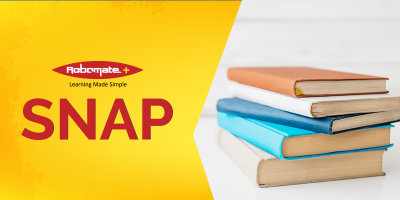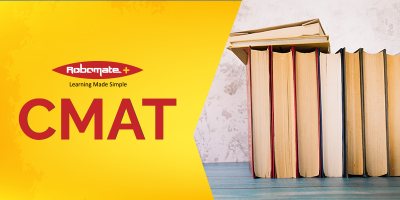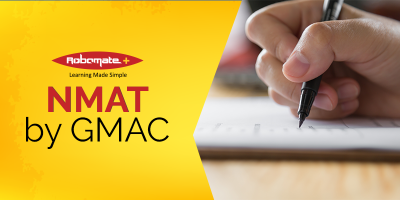State Board Commerce (XI-XII) - Test Papers
SNAP 2018 – Exam Dates, Eligibility, Exam Pattern & Cutoff Marks
Salient Features
Symbiosis International (Deemed University) offers courses in MBA / MSc (CA) / MSc (SS) programs. The admission into these colleges is through Symbiosis National Aptitude (SNAP) Online Test 2018. The candidates can register for Symbiosis International programs by applying separately for each.
Important Dates 2019
Start of registration 28 August 2018 closing of registration
Last date for payment of registration fees: 26 November 2018
Availability of admit card: 1st December 2018
Mode of test online
Exam date: 16th December 2 p.m. to 4 p.m.
Results: Second week of January 2019
Last Date to Download SNAP 2018 Scorecard: February 12, 2018
Exam dates and schedule
The candidates who have successfully registered for SNAP can appear for the exam on 16th December/. The online based test will be conducted form 2 pm to 4 pm.
Exam Eligibility
Symbiosis International University has said the following has set the following eligibility criteria for appearing SNAP 2018
- Education: The candidates should have 50% or more in their bachelors program and for the candidates belonging to reservation category can score 45 percentage in their bachelor’s program. Candidates who have bachelor’s degree from foreign universities should have an equivalent degree. An equivalence certificate from the Association of Indian Universities (AIU)
- Final year students can also apply for snap but their admission will be eligible only after securing 50% in the examination form in the examination for general category students and 45% reservation category. In case the candidates failed to secure the required marks or have backlogs in any of the subjects there admission will be invalid
- Age limit: there is no age limit for the candidates to appear for snap examination
- Foreign nationals can also apply for SNAP provided they can get the equivalent certificate from the board
Registration & Application form
The candidates can register by visiting the website. The last date for registration for SNAP is November 26, 2018. The candidates can do registration and fill the application as per the website. The process can be completed in single or multiple steps. The fee for SNAP 2018 is Rs.1750/-. The website is user friendly. You can find an online chat window, students can submit their questions and queries to get instant answers and proceed with the application. Keep educational documents such as SSC certificate, 12 class certificate and graduate certificate in hand to fill the details quickly and correctly. Fill the contact details as given in the ID proof.
Admit Card
The SNAP admit card is scheduled to be released on 1st December. Symbiosis International is the issuing authority. The candidates who have registered and paid the application fee can download the admit card from the website. After downloading the card check for the details registration number, candidates name, exam center, etc. The admit card should have correct details as per the application form. The recent passport size photo along with other ID proof should be presented at the exam center which enables identification of the candidate. It is mandatory for the student to carry ID proof such as adhar card, driving license or voter ID. Read the instructions carefully and be at the exam center an hour before the exam. Try to visit the text center a day before exam to avoid last minute rush.
Exam Pattern and Syllabus
There is not specific syllabus for preparing for SNAP. This online based test has 4 sections having 150 questions. The different sections of the question paper are
- English: reading, verbal reasoning and verbal ability
- Data interpretation and sufficiency: Syllogisms, Comprehension of passage / Poem, Analogies, Fill in the blanks
- Analytical and logical reasoning: Column graphs, Pie Chart, Coding and decoding Puzzles
- General knowledge and current affairs: Column graphs, Pie Chart, Coding and decoding Puzzles
There are 130 questions and the student can score maximum of 150 marks.
First three sections have 30 normal and 5 special questions and the lasat section has 20 normal and 5 special questions. It is an objective type test wherein normal questions have 4 options and the candidates have to choose the correct option. For special questions, the questions are in the form of fill in the blanks, where the candidates have to type the answer using the virtual keyboard
Normal question carries 1 mark and special question carries 2 marks
Test duration: 120 mins
There is negative marking for incorrect answers. Each incorrect answer will attract a penalty of 25%. Students tend to skip questions inorder to avoid negative marking.
There are 110 MCQs (Multiple Choice Questions) and 20 Non MCQs (fill in the blanks)
The test checks the caliber of the students on the different sections of the test. The difficulty level of the questions determines the cutoff marks.
Exam Centers
The exam will be conducted in 102 centers across the country. Here we list the exam center for SNAP
Agra, Jodhpur, Ahmedabad, Jhansi, Ahmednagar, Jamshedpur, Ajmer, Jammu, Aligarh, Jalandhar, Allahabad, Jaipur, Ambala, Jabalpur, Amravati, Indore, Amritsar, Hyderabad, Anand, Hubballi, Asansol, Howrah, Aurangabad, Hooghly, Bareiley, Hisar, Belagavi, Gwalior, Bengaluru, Guwahati, Bhilai, Guntur, Bhopal, Mumbai, Bhubaneswar, Mysuru, Bilaspur, Nagpur, Chandigarh, Mohali, Nashik, Chennai, Navi Mumbai, Coimbatore, Nellore, Cuttack, Noida, Gaziabad, Dehradun, Panipat, Delhi, Gurugram, Panjim, Mapusa, Dhanbad, Patiala, Dibrugarh, Patna, Ernakulam, Kochi, Portblair, Faridabad, Pune, Gandhinagar, Raipur, Gangtok, Bardang, Rajkot, Moradabad, Ranchi, Meerut, Roorkee, Mangaluru, Rourkela, Madurai, Shillong, Ludhiana, Shimla, Lucknow, Siliguri, Kurnool, Surat, Kazhikode, Thane, Kalyan, Dombivli, Kottayam, Thiruvananthapuram, Kota, Thrissur, Kolkata, Udaipur, Kolhapur, Vadodara, Karnal, Varanasi, Kanpur, Vijayawada, Kakinada and Visakhapatnam
Cutoff
The cutoff marks for SNAP to get admission into Symbiosis Institutes depend upon the percentile.
- MBA colleges accepting SNAP score with cut-offs 90% are SIBM (Symbiosis Institute of Business Management), SCMHRD (Symbiosis Centre for Management and Human Resource Development), SIIB (Symbiosis Institute of International Business), etc.
MBA colleges accepting SNAP score with cut-offs 80% are Symbiosis Institute of Operations Management (SIOM), SICSR (Symbiosis Institute of Computer Studies & Research), SITM (Symbiosis Institute of Telecom Management), etc.
CMAT – Exam Dates, Eligibility, Exam Pattern & Cutoff Marks
Salient Features
As per the new resolution NTA will be the authority responsible conducting exams for higher education instead of AICTE. NTA is an autonomous body created by Government of India which has designed the question paper for CMAT 2019.
NTA facilitates the Management Institutions to choose graduate candidates for admission in all Management programs. The AICTE-Approved Institutions/University Departments/Constituent Colleges/Affiliated Colleges across the countries accept CMAT score for admission into Management programs.
Important Dates
Registration starts: November 1, 2018
Registration Ends: November 30, 2018
Registration Fee for General Category: Rs.1400/-
Registration Fee for Reserved Category: Rs. 700/-
There is no option for CMAT 2019 Registration with Late Fee
Release of Admit Card Date: January 7, 2019
CMAT 2019 Exam Date: January 28, 2019
CMAT 2019 Result Date: February 10, 2019
Exam dates and schedule
The National Testing Agency (NTA) is being conducted byAICTE and is scheduled to be held on January 28, 2019. This is an online based exam.
Exam Eligibility
CMAT has set simple eligibility criteria as follows
- The candidate should be a citizen of India.
- The candidate should have minimum 3 years of bachelors program
- Final year students are also eligible to write this exam, but the eligibility for admission based on CMAT is possible provided the candidate pass the exam with the minimum qualifying marks
- There is no set age limit for the exam
MBA & PGDM: The candidate should have 3 years bachelors program and have 50% score for general category and 45% for reserved category.
Executive PGDM: In addition to bachelors degree the candidate should also have a minimum of 5 years experience. The candidates should score 50% (general category and 45% reservation category)
PGCM: Minimum three-year Bachelor’s program
Registration & Application form
CMAT registration link is available at ntacmat.nic.in. the registration and application can be done in a single step. The process can be completed quickly by keeping all the required documents in hand before the start of procedure. The basic requirement of mobile number and email address remains the same to authenticate and validate the candidate details and provide updates. The registration process enables you to get the registration number and password. Using the registration details and password, application form can be filled, note all the details should be filled correctly as the same details will get reflected in the admit card and the score card. Upload the recent password size photograph as this will enable easy entry in to the test center. An old or entirely different photo will reject your candidature at the test center. After successful submission of the application form, make the payment online. The payment can be done using debit card, credit card or net banking. Completion of payment completes the registration and application process. You will receive an acknowledgement email and message. Take a print of the acknowledgement email and keep it for future reference.
Admit Card
National Testing Agency (NTA) is responsible for issue of CMAT 2019 admit card on January 7. The CMAT admit card 2019 can be downloaded online giving the registered user ID and password. The candidates who have successfully submitted application form can download the admit card. Verify the details on the admit card and carry an ID proof along with the admit card to exam center.
Exam Pattern
The exam pattern for CMAT 2018 remains the same as in previous years. There will be 4 sections based on Quantitative Techniques & Data Interpretation, Logical Reasoning, General Awareness and Language Comprehension. Each of the 4 sections has 25 questions. The duration of exam is 3 hours
CMAT 2019 will have 100 questions, in the form of multiple choice questions, the candidates have to select the write answer from the available option.
Syllabus
There is no specific syllabus for the CMAT exam. The candidates have to be well-versed with the general MBA entrance exam syllabus
- Quantitative Techniques & Data Interpretation: Algebra, Time-Speed-Distance, Allegation & Mixtures, Geometry, graph, Quadratic and linear equations, etc
- Logical Reasoning: Analytical Reasoning, Linear Arrangements, Number Series, Matrix Arrangements, Blood Relationship Tests, etc.
- General Awareness: Economy, business, world, politics, sports, culture, society
- Language Comprehension: Reading Comprehension, Grammar, English Usage Errors, Parajumbles, etc.
CMAT 2018 exam paper was moderate to difficult question paper. Language comprehension section was easiest compared to the other sections. The candidates can refer the books “How to Prepare for Quantitative Aptitude for CAT” by Arun Sharma (Mc Graw Hill Education), “Quantitative Aptitude Quantum CAT Common Admission Tests for Admission Into IIMs” by Sarvesh K Verma (Arihant) and “Quantitative Aptitude for Competitive Examinations” by Abhijit Guha (Mc Graw Hill Education)
Exam Centers
Here are the cities where CMAT test is conducted for 2019
Agartala, Chennai, Indore, Mangalore, Shimla, Ahmedabad, Coimbatore, Jabalpur, Meerut, Srinagar, Ahmednagar, Dhule, Solan, Mumbai, Surat, Allahabad, Davangere, Jaipur, Mysore, Trivandrum, Mohali, Dehradun, Jammu, Nagpur, Udaipur, Amravati, Solapur,Jamshedpur, Nasik, Vadodara, Amritsar, Delhi, Jodhpur, Navi Mumbai, Varanasi, Aurangabad, Dhanbad, Kanpur, Noida, Visakhapatnam, Thane, Dharwad, Kochi, Nanded, Bhilai-Durg, Bangalore, Durgapur, Kolhapur, Panaji, Bareilly, Gulbarga, Kolkata,Patna, Bhavnagar, Gurgaon, Faridabad, Pune, Bhopal, Guwahati, Kozhikode, Ponda, Bhubaneswar, Gwalior, Lucknow, Rajkot, Bhuj, Ghaziabad, Ludhiana, Raipur, Chandigarh, Hyderabad, Kadi, Ranchi
Cutoff 2019
The cutoff marks are not issued by the organizing authority. The colleges or institutes set their own cutoff marks for admission into the colleges. The higher percentile provides admission of the candidate into reputed institute and easy high profile placements in good companies. Here are the institutes which requires 99% or higher percentile forgetting admission
- Jamnalal Bajaj Institute of Management Studies (JBIMS) Mumbai
- K J Somaiya Institute of Management Studies & Research (KJSIMSR), Mumbai
- We School Mumbai
- SIMSREE
- Pune University Department of Management Studies (PUMBA DMS)
- MET Institute of Management, Mumbai
- XISS Ranchi
The factors which determine the cutoff marks for CMAT are
- The number of candidates passing the exam
- The number of seats available for admission to the management program
- Difficulty level of the question paper
NMAT 2018 – Exam Dates, Eligibility, Exam Pattern & Cutoff Marks
Salient Features
NMAT Exam is conducted by Graduate Management Aptitude Council (GMAC). The exams will be conducted in 44 cities all over the country in 58 test centers. The NMAT by GMAC exam for the academic year 2019-21will be conducted from Oct 4, 2018 to Dec 17, 2018. The candidates can review their answers in the given allotted time. The 75-day window test reduces the stress of one sitting and allows
The NMAT by GMAC enables business schools to recruit top candidates.
Important Dates
Exam date: 04 Oct, 2018 – 17 Dec, 2018
Mode of Exam: Online
Downline score card: 31 Mar, 2019, online mode
Exam dates and schedule
NMAT by GMAC is scheduled to be conducted by GMAC from October 4 to December 17, 2018. The exam will be conducted over a 75 day period, between 1st week of October 2018 until 3rd week of December 2018.
Exam Eligibility
Below is the eligibility criterion for NMAT 2019 entrance examination
- Education: The candidate should be a graduate in any stream from a recognized university. The candidates who are in final year of graduation are also eligible for appearing and their candidature will be valid after they pass and score the qualifying marks as set by the institute.
- Qualifying marks: The candidates have to secure atleast 50% marks in their qualifying examination
Registration & NMAT 2019 Application form
The candidates can register only through online mode. The registration has been started from 3rd July 2019. Before starting the registration process the candidates should keep an active mobile number and email address throughout the registration and application process. The successful registration and payment gives an acknowledgement receipt which should be saved for future.
Admit Card
The candidates who have successfully completed registration can download the admit card from NMAT which is conducted by GMAC. The candidates can download the application form by visiting the official website i.e. nmat.org.in, and log in using your user name & password. Download the admit card and verify the details such as Candidate’s name, application number, test center, date & time, course, category. The admit card can be downloaded until the date of exam. Any discrepancy in admit card can be reported to 7863008300 or nmatsupport@gmac.com. The candidates are requested to carry a photo ID proof along with the admit card.
Exam Pattern
NMAT is an online computer based test which has all multiple choice type questions. There are 120 questions which are to be answered in 120 mins. There are 3 sections in the question paper and the candidates can arrange the order of sections. Once the order of sections is selected it cannot be changed and the candidate has to follow the order. Each section has to be answered in the specified timeframe. The most interesting and positive aspect of NMAT by GMAC 2018 is no negative marking. The candidates can make a wild guess and be lucky as there is no negative marking. The difficulty level of the exam is not high as compared to similar competitive exams.
Each question carries a single mark. Cross-check and verify all your answers before submitting the section. Once you close the section, you will not be able to edit or comeback to the previous section.
NMAT by GMAC allows students to attempt the exam 3 times in a given admission cycle, this enables the students to get better score.
NMAT by GMAC is one of the m ost user-friendly national exams which offer the students to select the test appointment date, time and center location.
Syllabus
NMAT by GMAC exam has three sections English Language, Quant and Logical Reasoning. The language sections covering the following topics
Vocabulary: This covers Synonyms, Antonyms, Analogies, Fill in the Blanks and Cloze Test
Grammar: Identify the Error and Choose the Correct Preposition
Comprehension: Reading Comprehension and Parajumbles
Tips to improve learning skills for NMAT by GMAC
The language section has 32 questions which are to be answered in 22 mins. Ideally each question should be answered in 40 secs. Practice helps in improving the answering time. Practice helps in identifying the weak areas. Improve your Reading comprehension as well as vocabulary which can be accomplished by reading books or newspaper every day. The Editorial section of newspapers helps in improving the vocabulary.
There are 48 questions which are to be answered in 38 mins, so you will have approx. 1 min for each. Logical reasoning will be based on Verbal Reasoning and Analytical Reasoning.
Logical reasoning questions have to be practiced and solving different types of questions will give you an idea on handling such questions. Logical reasoning is skill which is developed over a period of time.
Exam Centers
The exam is conducted in all the major cities acros the country. In total there 58 exam centers in 44 cities Hyderabad, Vijaywada, Vishakhapatnam, Guwahati, Patna, New Delhi, Chandigarh, Raipur, Ahmedabad, Surat, Vadodara, Gurugram, Faridabad, Jammu, Jamshedpur, Ranchi, Ranchi, Bengaluru, Manipal, Mysore, Kochi, Bhopal, Indore, Jabalpur, Mumbai, Nagpur, Nashik, Pune, Shillong, Bhubaneswar, Patiala, Jaipur, Jodhpur, Kota, Pilani, Chennai,Tiruchirapalli,Vellore, Agra, Lucknow, Noida, Varanasi, Dehradun and Kolkata
Cutoff Marks
The candidates who intend to take admission in 21 MBA colleges should have the NMAT exam cut offs as per individual college.
Based on the cut-off marks of NMAT 2018 exam score, the students can secure admission in the top college and secure a job in reputed origination with good package. The colleges are autonomous University B-schools offering MBA degree or private PGDM colleges. Here we list you some of the colleges along with the NMAT score cut-offs
- MBA colleges accepting NMAT score with cut-offs 90% are NMIMS (Mumbai, Bangalore and Hyderabad) and XIM, Bhubaneswar.
- MBA colleges accepting NMAT score with cut-offs 80% are VIT, Vellore and SRM University, Chennai
MBA colleges accepting NMAT score with cut-offs of upto 60% are MISB Bocconi, Mumbai, IBS (ICFAI B-schools), Hyderabad & 9 other cities, and Amity University, Noida (Delhi NCR)
Guru Nanak Jayanti
The birthday of Shree Guru Nanak Dev Ji is celebrated as Jayanti. Guru Nanak Jayanti is also called as “Guruparv”. It is the biggest festival of Sikh religion. It is also one the oldest festival of Sikh religion. Guru Nanak Jayanti is celebrated on the full moon day of the Hindi month “Kartik” and is also called as “Kartik Poornima”. Shree Guru Nanak Dev Ji was the founder of the Sikh religion. Few important facts related to Shree Guru Nanak Dev Ji are below-
Name – Nanak
Famous Name – Shree Guru Nanak Dev Ji
Birth Date – 15 April, 1469
Father’s Name – Kalyanchand Mehta Kalu Ji
Mother’s Name – Tripta Devi
Sister’s Name – Nanaki
Birth Place – Village Rai-Bhoi Di Latvandi (situated on the banks of river Ravi), District Shaikhpura. Today, this place is known as Nankana Sahib, and is situated in Punjab, Pakistan.
Death – 22 September 1539.
Death Place – Kartarpur, Mughal Samrajya, Pakistan.
On the occasion of Guru Nanak Jayanti, Shikh people wear new cloths and visit Gurudwaras. Guru Nanak Jayanti is started with “Prabhat Pheri” in Gurudwaras and Sikh people keeps procession in every locality with chanting of “Aasa-de-war (Morning Bhajans)”. They pray Shree Guru Nanak Deve Ji and pay tribute to “Guru Granth Sahib”. Through out the day, the holy book of Shikh religion “Guru Granth Sahib” is continuously read and listened in Gurudwaras. People lit the holy lamps (“Diye”), keeps processions, held “Langas” i.e. free distribution of food, and sweet “Prasad” (or Karah Prasad) is distributed everywhere. Besides Sikhs and “Nanppan Hindu”, several other followers of Shree Guru Nanak Dev Ji celebrate the holy festival of Guru Nanak Jayanti.
Sikh people keep procession under their holy flag which is followed by bands of peace and bhajans. The males participate in the “Gatka” shows, and they exhibit their special form of martial art. People march on roads while saying holy words said by Shree Guru Nanak Dev Ji. In the evening Gurudwaras are well decorated wth lights and lots of people visit them for having blessings of their lord Guru. They lit candles and lamps in their homes as well.
Our country is blessed with the birth of great people from time to time, and Shree Guru Nanak Dev Ji was one of such great person. He has played a great role in national social reformation and devoted his whole life for betterment of people. We pay our heartily regards to such a great soul. The followers of Shree Guru Nanak Dev Ji call him with various other names such as Guru Nanak, Baba Nanak, NanakShah, and more. Shree Guru Nanak Dev Ji was a great phelospher, a great yogi, recluse, social reformer, poet, great patriot, and was a world well wisher.
Shree Guru Nanak Dev Ji was a child of intese intelligence. He was not interested in materialistic world from childhood. He was not very studious child as he didn’t get interest in normal school subjects. In the age of 7-8 years his teachers found themselves unable to answer his questions related to god and spirituality and they decided to leave him at his home themselves respectfully. After that he devoted his all time in religious thinking and programs. In his childhood, many divine events took places by seeing which people accepted him as special divine child.
Shree Guru Nanak Dev Ji got married in the age of 16 years, and when he was 32 years old he was blessed with his first son Shree Chand. After 4 years, she was blessed with his second son Lakhmidas. Later in the year 1507, he left his family with the parents of his wife and went for pilgrimage with his four followers namely—Mardana, Lahna, Bala, and Ramdas. They all gave the preachings of Shree Guru Nanak Dev Ji till 1521 and travelled through India, Afganistan, Faras, and Arab countries. In Punjabi, such travellings is called “Udasiyan”.
Shree Guru Nanak Dev Ji was a pantheist. Idol worship was meaning less for him. He was against illogical customs. His philosophy throws light on religious, political, social and humanity issues. He gave higher value to women. He has given 10 theories and he himself followed them. These 10 theories are–
- There is one god.
- We should follow or worship only one god.
- God exists everywhere and in every living being.
- There is no fear for those who believe in god and have full faith on him.
- Work with all sincerity and pray to the God.
- We should never persecute any living being.
- We should always feel happiness and live happily.
- We should donate some part of money we earned with our honesty and hardwork.
- Every person is equal – eighter male or female.
- We have to eat for keeping our sound health but we must stay away from greediness.
The conclusion of his preachings was that… there is one god and every person in this world should be devoted to that one god. Idol worship was not necessary for him. There was a good impact on the people of both the religions; the Hindu and the Muslim. Some people have complained nagetively about his preachings to the king of that time Ibrahim Lodi and he even jailed for few days. When Ibrahim Lodi was defeated by Babar in the battle of Panipat then he was released from the jail.
In his last days, he got very popular and there are millions of his followers. His own thoughts were changed and he started living with his family members and continues giving donations to the needy people, held “Langars” etc. He founded a town named “Kartarpur”, which is now in Pakistan, where he opened a big hospice. He left his body in this hospice itself.
He declared his brother “Lahna” as his successor who become famous with the name of “Angad Dev” later.
Guru Nanak Jayanti is a very special festival and every human being should celebrate with all welcoming heart and everyone should remember his preachings.
NCERT Solutions for Class 10 Science Chapter 16 – Management of Natural Resources
NCERT solutions for class 10 Science chapter 16 Management of Natural Resources will help students to learn why we need to manage and save resources carefully. Water is basic need of all form of life plants animals and humans this topic includes dams and water harvesting. Chipko movement and restoration of Arabari forest. Moving ahead it also discusses about coal and petroleum. You can download ncert solutions for class 10 science chapter 16 pdf below.
NCERT Solutions for Class 10 Science Chapter 16 – Management of Natural Resources
NCERT Solutions for Class 10 Science Chapter 15 – Our Environment
NCERT solutions for class 10 Science chapter 15 Our Environment teach student about Ecosystem, Food chain and food web. Students will also learn about Ozone layer and how it’s getting depleted. To get more knowledge download NCERT Solution PDF.
NCERT Solutions for Class 10 Science Chapter 15 – Our Environment











